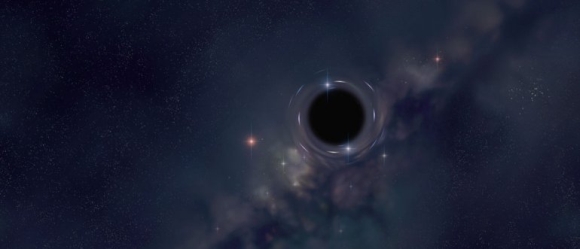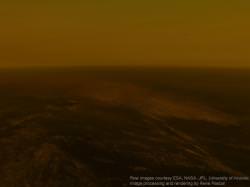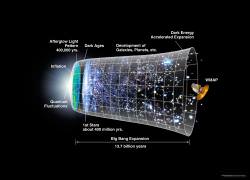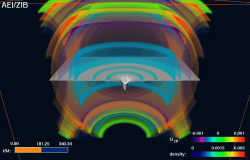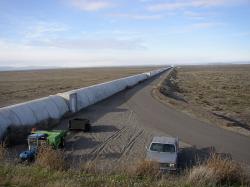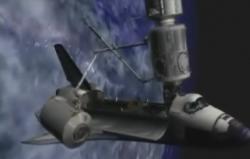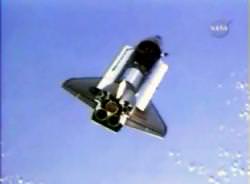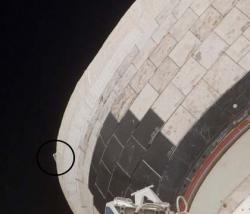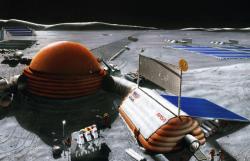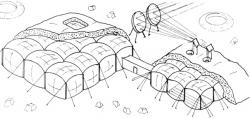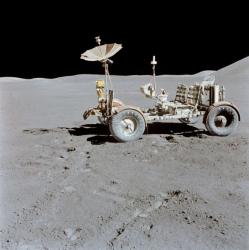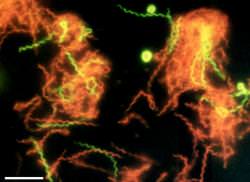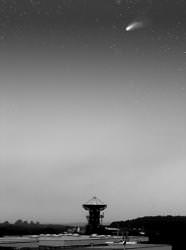Researchers at St. Andrews University, Scotland, claim to have found a way to simulate an event horizon of a black hole – not through a new cosmic observation technique, and not by a high powered supercomputer… but in the laboratory. Using lasers, a length of optical fiber and depending on some bizarre quantum mechanics, a “singularity” may be created to alter a laser’s wavelength, synthesizing the effects of an event horizon. If this experiment can produce an event horizon, the theoretical phenomenon of Hawking Radiation may be tested, perhaps giving Stephen Hawking the best chance yet of winning the Nobel Prize.
So how do you create a black hole? In the cosmos, black holes are created by the collapse of massive stars. The mass of the star collapses down to a single point (after running out of fuel and undergoing a supernova) due to the massive gravitational forces acting on the body. Should the star exceed a certain mass “limit” (i.e. the Chandrasekhar limit – a maximum at which the mass of a star cannot support its structure against gravity), it will collapse into a discrete point (a singularity). Space-time will be so warped that all local energy (matter and radiation) will fall into the singularity. The distance from the singularity at which even light cannot escape the gravitational pull is known as the event horizon. High energy particle collisions by cosmic rays impacting the upper atmosphere might produce micro-black holes (MBHs). The Large Hadron Collider (at CERN, near Geneva, Switzerland) may also be capable of producing collisions energetic enough to create MBHs. Interestingly, if the LHC can produce MBHs, Stephen Hawking’s theory of “Hawking Radiation” may be proven should the MBHs created evaporate almost instantly.
Hawking predicts that black holes emit radiation. This theory is paradoxical, as no radiation can escape the event horizon of a black hole. However, Hawking theorizes that due to a quirk in quantum dynamics, black holes can produce radiation.
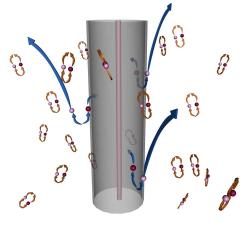
Put very simply, the Universe allows particles to be created within a vacuum, “borrowing” energy from their surroundings. To conserve the energy balance, the particle and its anti-particle can only live for a short time, returning the borrowed energy very quickly by annihilating with each other. So long as they pop in and out of existence within a quantum time limit, they are considered to be “virtual particles”. Creation to annihilation has net zero energy.
However, the situation changes if this particle pair is generated at or near an event horizon of a black hole. If one of the virtual pair falls into the black hole, and its partner is ejected away from the event horizon, they cannot annihilate. Both virtual particles will become “real”, allowing the escaping particle to carry energy and mass away from the black hole (the trapped particle can be considered to have negative mass, thus reducing the mass of the black hole). This is how Hawking radiation predicts “evaporating” black holes, as mass is lost to this quantum quirk at the event horizon. Hawking predicts that black holes will gradually evaporate and disappear, plus this effect will be most prominent for small black holes and MBHs.
So… back to our St. Andrews laboratory…
Prof Ulf Leonhardt is hoping to create the conditions of a black hole event horizon by using laser pulses, possibly creating the first direct experiment to test Hawking radiation. Leonhardt is an expert in “quantum catastrophes”, the point at which wave physics breaks down, creating a singularity. In the recent “Cosmology Meets Condensed Matter” meeting in London, Leonhardt’s team announced their method to simulate one of the key components of the event horizon environment.
Light travels through materials at different velocities, depending on their wave properties. The St. Andrews group use two laser beams, one slow, one fast. First, a slow propagating pulse is fired down the optical fiber, followed by a faster pulse. The faster pulse should “catch up” with the slower pulse. However, as the slow pulse passes through the medium, it alters the optical properties of the fiber, causing the fast pulse to slow in its wake. This is what happens to light as it tries to escape from the event horizon – it is slowed down so much that it becomes “trapped”.
“We show by theoretical calculations that such a system is capable of probing the quantum effects of horizons, in particular Hawking radiation.” – From a forthcoming paper by the St. Andrews group.
The effects that two laser pulses have on eachother to mimic the physics within an event horizon sounds strange, but this new study may help us understand if MBHs are being generated in the LHCs and may push Stephen Hawking a little closer toward a deserved Nobel Prize.
Source: Telegraph.co.uk

